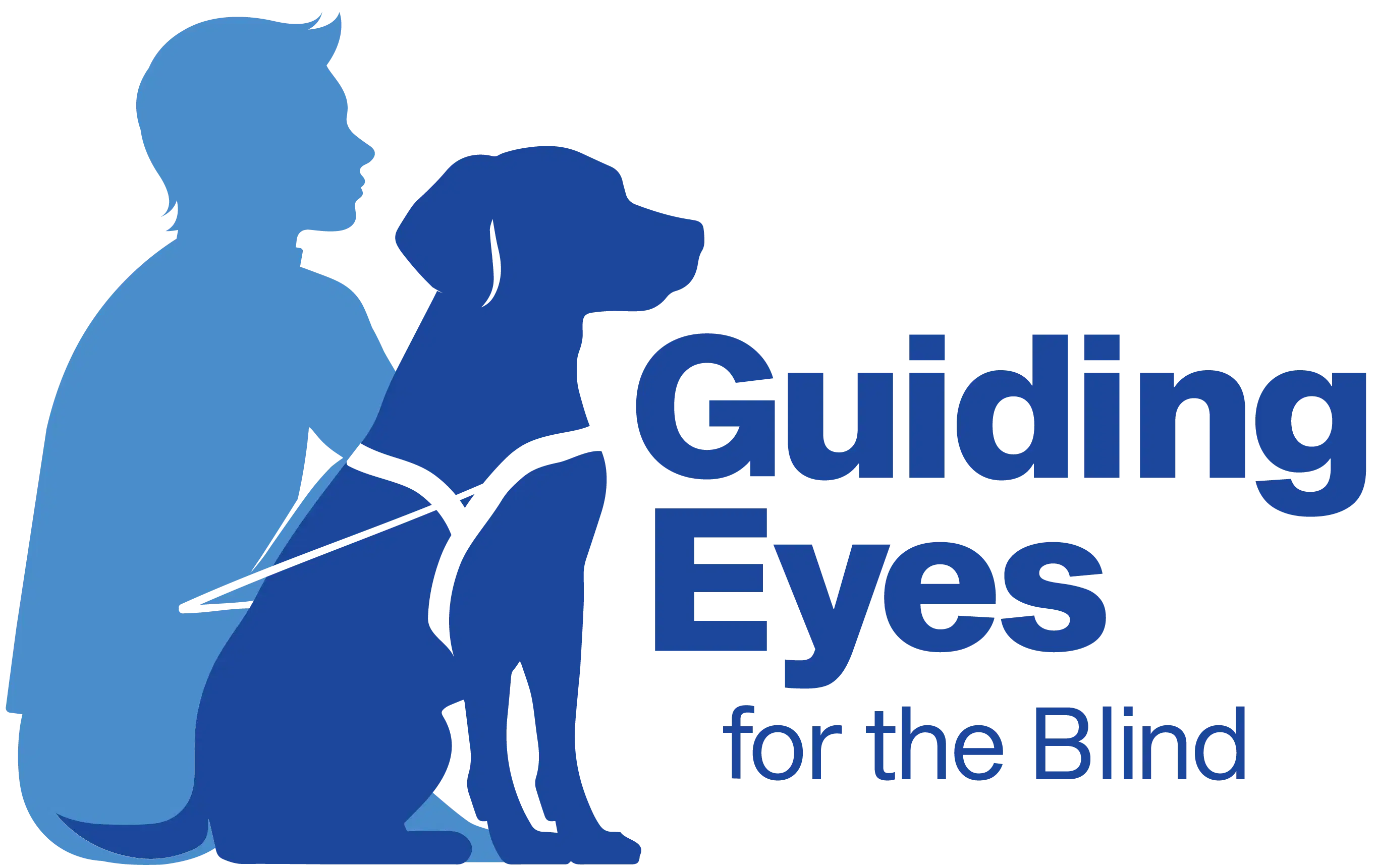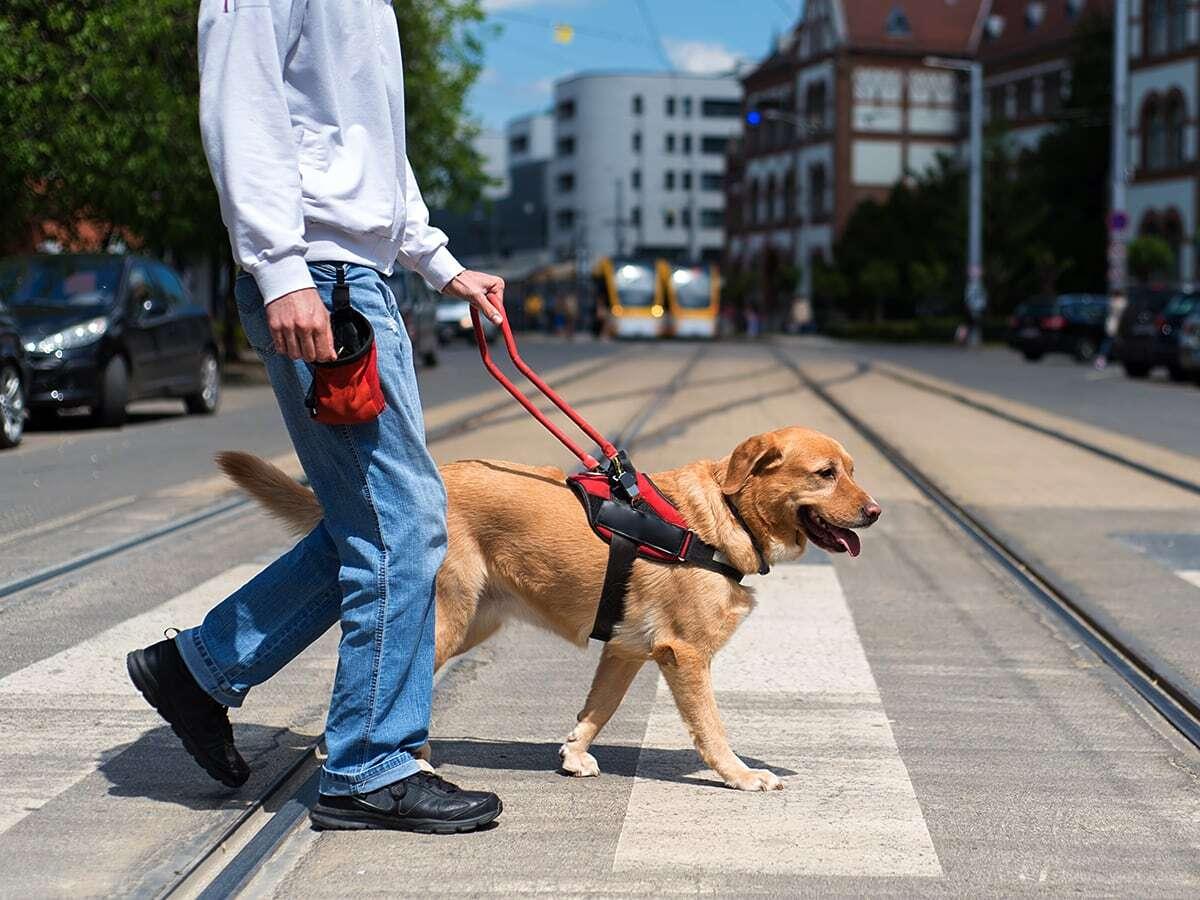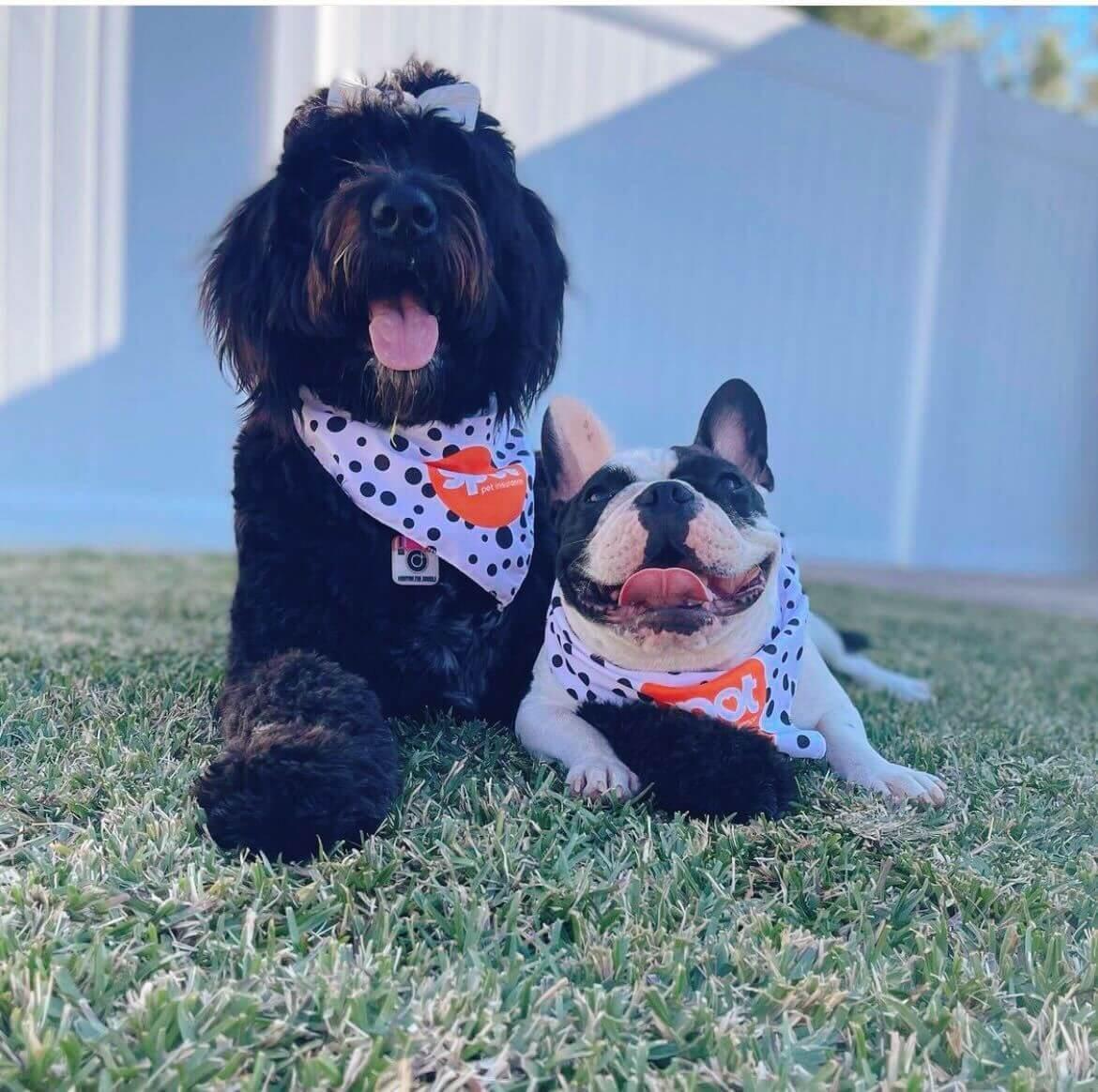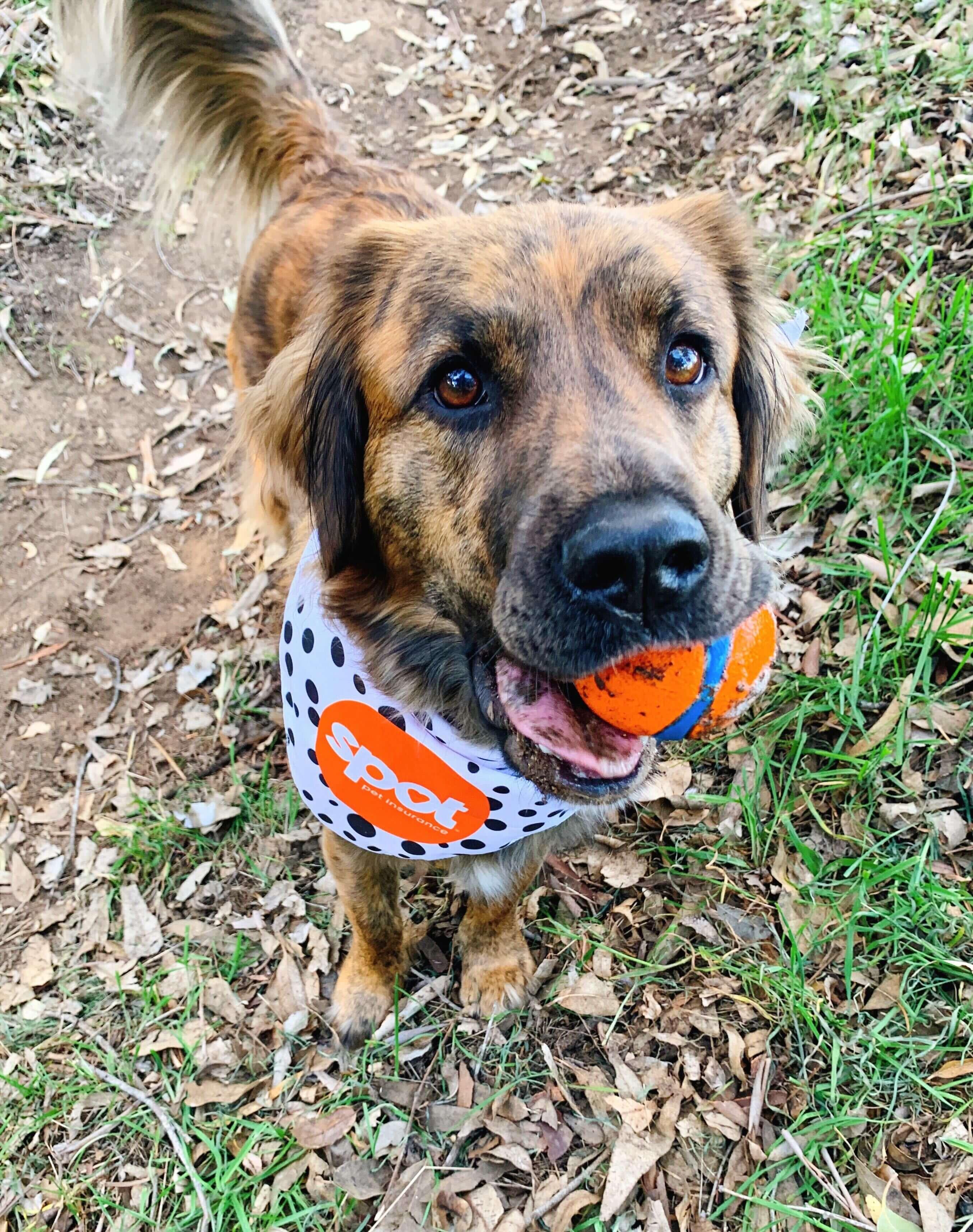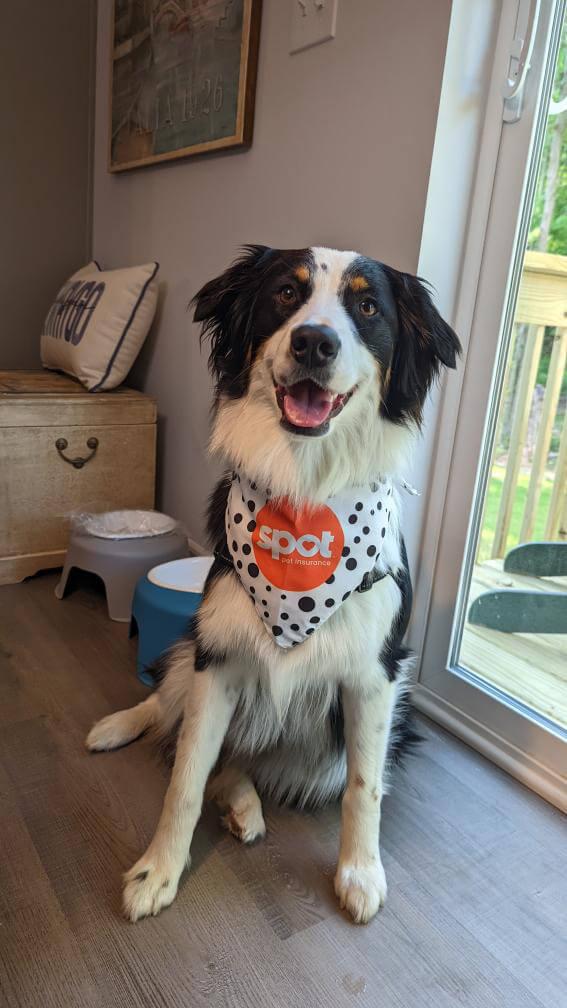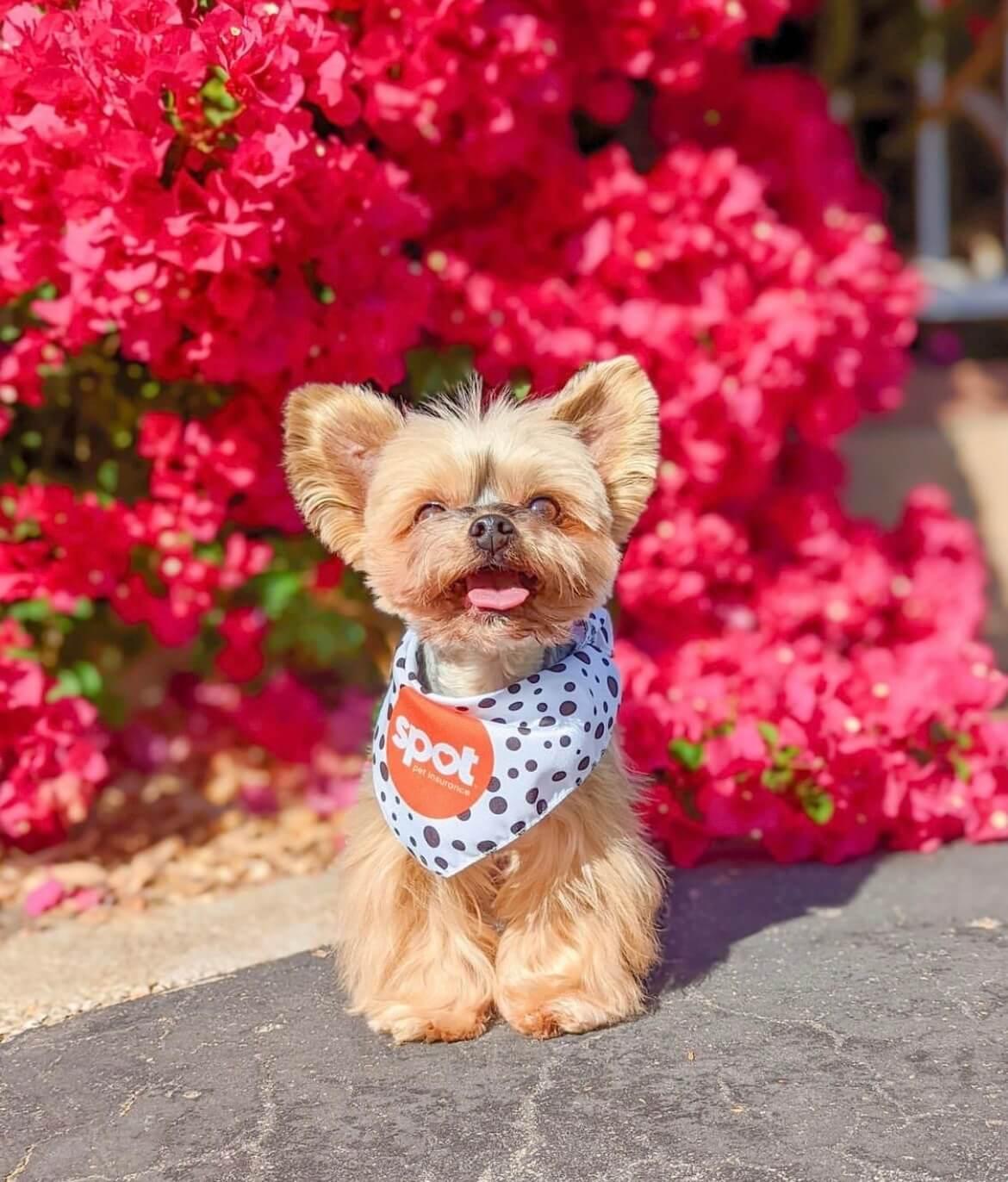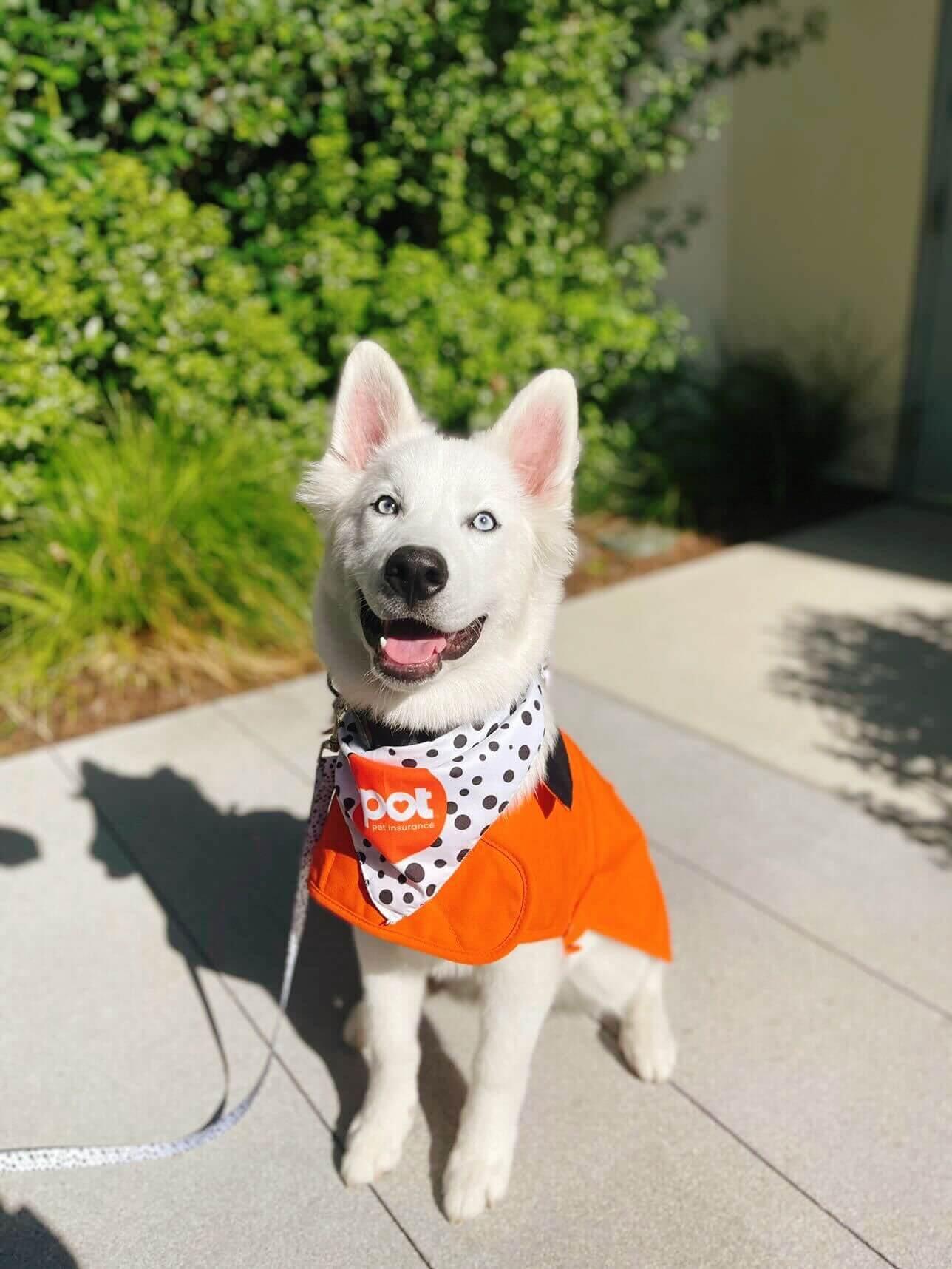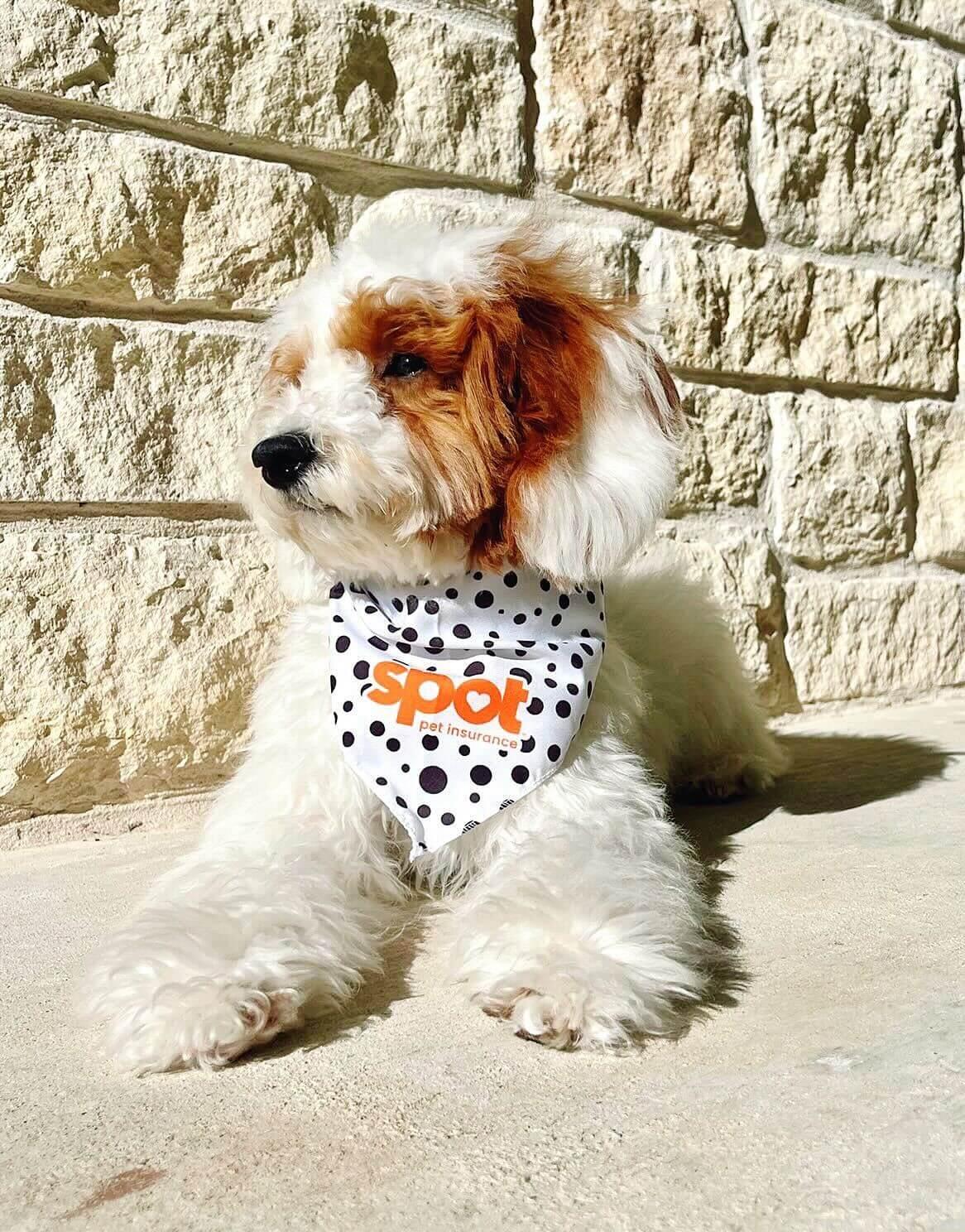At Guiding Eyes, maintaining the health and well-being of our world-class canines is our primary concern from the day our litters are born – for it is the health of the dog that ensures the safety of the graduate they will one day guide.
For all dogs, physical and mental health are equally important, as both contribute to a happy, balanced, and healthy life. When a dog’s body and mind are both engaged and cared for, they thrive, which strengthens the bond with their humans – for a guide dog, this takes on a heightened significance.
Physical Health
Regular physical activity keeps dogs’ bodies strong, supports joint and heart health, and helps prevent obesity. A focus on your dog’s physical activity also offers a great opportunity to enhance your bond – time well spent together builds trust and connection.
"A dog’s mental and physical health are inseparable. For guide dogs in training, regular exercise, mental stimulation, and emotional support are essential to not only to keep them physically strong but also to help them stay focused, confident, and ready to transform the lives of the people they guide." - Dr. Beth Brenninkmeyer, DVM, Chief Veterinary Officer, Guiding Eyes for the Blind
One of the biggest health concerns our canine companions face is obesity, which is body weight at least 15% above ideal. Global clinical surveys from the Association for Pet Obesity Prevention indicate that greater than 50% of the canine population is considered overweight or obese. Obesity is a major contributor to long-term health issues; it can significantly shorten a dog’s life span and reduce quality of life as secondary medical conditions develop in the face of excessive stress on organ systems and joints.
Fortunately, obesity is largely preventable through proper diet and exercise. It is essential for all dogs – particularly guide dogs – to participate in regular activity to maintain physical and mental acuity.
Additionally, regular physical activity helps prevent injuries - a strong, well-conditioned dog is less likely to experience problems from weak muscles or poor coordination.
Mental Health
Further, physical activity supports your dog’s mental health - through play and exercise, a dog’s mind is engaged and stimulated, which is key.
A dog’s mental health affects nearly every part of its life. Stress or anxiety can weaken their immune system, increasing their vulnerability to illness and infection. It also affects a dog’s behavior and training, as their emotional state directly affects how they respond to the world and to learning experiences – for a guide dog in training, this exposure shapes their confidence, adaptability, and reliability.
To support our dogs’ mental health, Guiding Eyes has an extensive enrichment program. Our nurturing staff and volunteers provide a healthy combination of exercise and rest to stimulate our dogs’ minds. This practice ensures a positive, enjoyable experience for the dogs under our managed care. Our program is designed to enhance the dogs’ lives and prevent stress, boredom, and behavioral issues during this important training period.
Our program provides our dogs with environmental stimuli. This practice ensures a positive and enjoyable experience for the dogs in our care. Any novel stimulus which evokes an animal’s interest can be considered enriching:
Scents, visual movement, natural and artificial objects
Novel food and different methods of preparing food (such as puzzles and food toys)
Different textures and surfaces
Walks in new environments
Massage
Safe chew items
"Enrichment is a vital part of a dog’s daily life. Providing opportunities for mental stimulation, play, and exploration keeps dogs engaged, happy, and confident, whether they’re in training to become guide dogs or simply living their best lives." - Meghan Davis, Kennel Manager, Guiding Eyes for the Blind
A dog’s physical and mental health are deeply interconnected, shaping their behavior, confidence, and overall wellness. Regular exercise, mental stimulation, and emotional support not only keep dogs strong and healthy but also help them navigate the world with focus and resilience. Whether a family companion or a guide dog in training, prioritizing both mind and body ensures dogs can live their happiest, healthiest lives, and bring joy, independence, and companionship to those around them.
Dos and Don’ts of Interacting with a Guide Dog Team
Do not pet, feed, make direct eye contact, talk to, or otherwise distract a working guide.
A guide dog’s first responsibility is to their handler. While in harness, a guide dog is constantly navigating around obstacles, indicating objects such as street curbs or stairs, and looking to their handler for direction. As such, it is crucial that they remain focused. Even a momentary distraction could cause an individual who is blind to run into an obstacle or miss a turn down a particular grocery store aisle or sidewalk.
Do not give a guide dog commands.
Guide dogs and their handlers are carefully matched using factors such as environment, temperament, and pace to facilitate a natural bond. Handlers are taught to use strict commands as they grow comfortable together to reinforce their partnership. It is essential that the dog only looks to the handler for those commands, so they are always on their best behavior and maximize success.
When giving verbal directions, address the handler by name, not the dog.
The handler plays an equal part in the team’s safe and independent travel and actively gives directions to the dog. Both dog and handler communicate through verbal and visual cues to navigate to new destinations and memorize routes to frequently visited places. Offer specific directions to the handler, as vague phrases such as “over there” are ineffective at best.
Do not touch a guide dog’s equipment. This includes both the harness and leash.
A guide dog handler is the expert on their dog’s needs and the equipment issued to them. Attempting to grab the leash or harness can result in confusion for the dog, inability to work, and in some cases, dangerous consequences for the team. If you have been asked to assist a guide dog team, you should lead the handler, not the dog.
Keep your pet under control when passing a working guide dog team.
Just as you can be a distraction, so can your pet. It is your job as a responsible pet parent to prevent your pet from interacting with a working guide dog in any way. Always keep your pet on a leash and out of indoor spaces open to the public. If your dog has a history of aggression, take extra precautions, as negative interactions can lead to stress and trauma for guide dogs and their handlers.
Guiding Eyes for the Blind is a leading nonprofit organization dedicated to enhancing the independence, mobility, and quality of life for people who are blind or visually impaired.
We are passionate about connecting exceptional dogs with individuals for greater independence.
Since 1954, Guiding Eyes has been providing expertly bred, trained, and matched guide dogs, giving individuals the freedom to navigate the world safely and confidently. Beyond our life-changing guide dogs, we offer comprehensive support, including orientation and mobility training, to ensure each partnership thrives. Guided by our mission to transform lives, Guiding Eyes empowers people to achieve their full potential with dignity, confidence, and independence.
